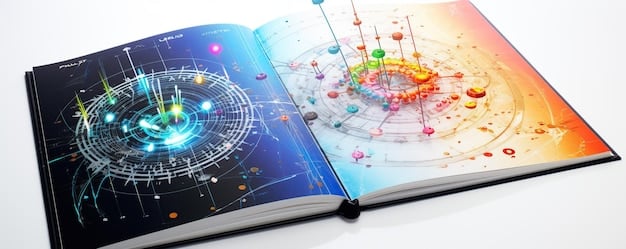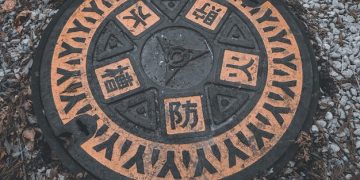The I Ching for Modern Life: Updated Translations & Interpretations Review

The I Ching for Modern Life: A Review of Updated Translations and Interpretations explores how contemporary editions of this ancient divination system offer updated perspectives for today’s challenges. This review examines key translations and interpretations, assessing their relevance and accessibility for modern readers.
The I Ching, or Book of Changes, has been a source of wisdom and guidance for centuries. Navigating life’s complexities can be challenging, and many seek clarity through ancient practices. This article offers The I Ching for Modern Life: A Review of Updated Translations and Interpretations, providing insights into how contemporary versions of this classic text can be relevant today.
We will explore several updated translations and interpretations of the I Ching, examining their strengths and weaknesses, and offering guidance on which versions may be most suitable for different readers. Whether you are a seasoned practitioner or new to the I Ching, this review aims to enhance your understanding and appreciation of this ancient system.
Understanding the I Ching: A Timeless Guide
The I Ching’s enduring appeal lies in its ability to offer insights into the cyclical nature of life and the patterns that govern change. From ancient rulers to modern individuals, people have turned to the I Ching for guidance in making decisions, understanding relationships, and navigating personal growth. Modern translations aim to make this wisdom more accessible.
The Core Principles of the I Ching
At its heart, the I Ching is a system of divination based on 64 hexagrams, each composed of six stacked lines. These lines are either broken (yin) or unbroken (yang), representing the fundamental duality of existence. Understanding these principles is crucial for applying The I Ching for Modern Life: A Review of Updated Translations and Interpretations.
- Yin and Yang: The dynamic interplay between these opposing forces drives change and creates balance.
- Hexagrams: Each hexagram represents a unique situation or stage in a cycle of change.
- Change and Transformation: The I Ching emphasizes the constant flux of life and the importance of adapting to change.
- Inner Reflection: The I Ching encourages users to reflect on their inner state and motivations to gain deeper understanding.
By understanding these core principles, readers can better interpret the I Ching’s insights and apply them to their own lives. Modern translations often include detailed explanations of these principles to assist beginners.

Key Considerations for Modern Translations
When exploring The I Ching for Modern Life: A Review of Updated Translations and Interpretations, it’s important to consider what makes a translation truly effective for contemporary readers. Not all translations are created equal, and different versions may resonate more strongly with different individuals.
Accessibility and Clarity
One of the most important factors is accessibility. A good modern translation should use clear, concise language that avoids archaic terms and convoluted sentence structures. The goal is to make the I Ching’s wisdom understandable to a broad audience, regardless of their prior knowledge.
Cultural Relevance
Another key consideration is cultural relevance. The I Ching originated in ancient China, and its symbolism and imagery are deeply rooted in Chinese culture. A good translation should bridge the gap between this ancient context and the modern world, providing explanations and interpretations that resonate with contemporary readers.
Accuracy and Fidelity
While accessibility and relevance are important, accuracy should not be sacrificed. A good translation should remain faithful to the original text, preserving the integrity of the I Ching’s wisdom. Translators should have a deep understanding of both the Chinese language and the philosophical underpinnings of the I Ching.
Ultimately, the best modern translation is one that strikes a balance between accessibility, relevance, and accuracy. Readers should carefully consider these factors when choosing a translation that suits their needs and preferences.
Exploring Notable Updated Translations
Several updated translations of the I Ching have emerged in recent years, each offering a unique approach to interpreting this ancient text. Let’s delve into some notable examples to provide a comprehensive The I Ching for Modern Life: A Review of Updated Translations and Interpretations.
The Wilhelm/Baynes Translation
Richard Wilhelm’s translation, originally published in German and later translated into English by Cary Baynes, is a classic and widely respected version. It is known for its scholarly approach and detailed commentary, providing valuable context for understanding the I Ching’s symbolism.
Thomas Cleary’s Translation
Thomas Cleary’s translation offers a more concise and accessible interpretation of the I Ching. Cleary focuses on extracting the essential meaning of each hexagram, making it easier for modern readers to grasp the core message.
Carol Anthony’s Translation
Carol Anthony’s translation emphasizes the practical application of the I Ching in everyday life. Her commentary offers guidance on how to use the I Ching for personal growth and problem-solving.
Each of these translations offers valuable insights into the I Ching. Readers should explore different versions to find the one that resonates most strongly with them. The I Ching for Modern Life: A Review of Updated Translations and Interpretations should consider individual preferences and learning styles.

Interpreting the I Ching for Contemporary Challenges
The I Ching for Modern Life: A Review of Updated Translations and Interpretations also involves understanding how to apply the I Ching’s wisdom to the challenges of today’s world. While the text originated in ancient times, its principles remain relevant for addressing modern concerns.
Decision-Making
The I Ching can be a valuable tool for making difficult decisions. By consulting the I Ching, individuals can gain insights into the potential consequences of different choices and make more informed decisions.
Relationship Dynamics
The I Ching can also shed light on relationship dynamics. By examining the hexagrams related to a particular relationship, individuals can gain a better understanding of the underlying patterns and challenges.
Personal Growth
Finally, the I Ching can be a powerful tool for personal growth. By reflecting on the I Ching’s insights, individuals can gain a deeper understanding of themselves and their potential.
Ultimately, the key to interpreting the I Ching for contemporary challenges is to approach it with an open mind and a willingness to reflect on its wisdom. Modern translations and interpretations can provide valuable guidance in this process.
The Enduring Relevance of the I Ching
As we conclude The I Ching for Modern Life: A Review of Updated Translations and Interpretations, it’s clear that this ancient text continues to offer valuable insights for contemporary readers. Its timeless wisdom and adaptable principles make it a powerful tool for navigating the complexities of modern life.
A Source of Wisdom and Guidance
Whether used for decision-making, relationship understanding, or personal growth, the I Ching provides a unique perspective on the cyclical nature of life and the importance of adapting to change.
Modern Translations for Accessibility
Updated translations and interpretations have made the I Ching more accessible to a wider audience, ensuring that its wisdom remains relevant for generations to come.
Embracing the I Ching’s Potential
By exploring different translations and approaches, readers can unlock the full potential of the I Ching and integrate its wisdom into their daily lives.
The I Ching’s enduring relevance lies in its ability to connect us with the wisdom of the past while providing guidance for the future. Embracing this ancient text can lead to greater self-awareness, improved decision-making, and a deeper understanding of the world around us.
| Key Point | Brief Description |
|---|---|
| 🔑 Core Principles | Understanding Yin/Yang, Hexagrams, and Change is vital for I Ching use. |
| 📚 Modern Translations | Wilhelm/Baynes, Cleary, and Anthony offer unique I Ching interpretations. |
| 🎯 Contemporary Use | The I Ching aids decision-making, relationships, and personal growth. |
| 🔮 Timeless Wisdom | I Ching provides insights into life’s cycles, relevant across ages. |
Frequently Asked Questions
The I Ching, or Book of Changes, is an ancient Chinese divination system used to gain insights into various aspects of life. Modern translations make it accessible today.
By consulting the I Ching, individuals can gain a better understanding of potential outcomes and make more informed decisions based on ancient wisdom.
Thomas Cleary’s translation is often recommended for beginners due to its concise and accessible interpretation of the text for any user.
Yes, the I Ching’s principles of change, balance, and self-reflection remain highly relevant for navigating the complexities of modern life and challenges.
Yes, through reflection on the I Ching’s insights, individuals can gain a deeper understanding of themselves and their potential for personal growth in their lives.
Conclusion
In summary, exploring The I Ching for Modern Life: A Review of Updated Translations and Interpretations reveals its lasting value as a guide for modern readers. Its principles offer unique perspectives applicable to various life challenges, and therefore it’s a potent guidance.
Whether you’re seeking clarity in decision-making or personal growth, the I Ching’s timeless wisdom provides a valuable resource for navigating life’s ebbs and flows. By embracing the teachings, you can unlock a deeper understanding of yourself and the world around you.





